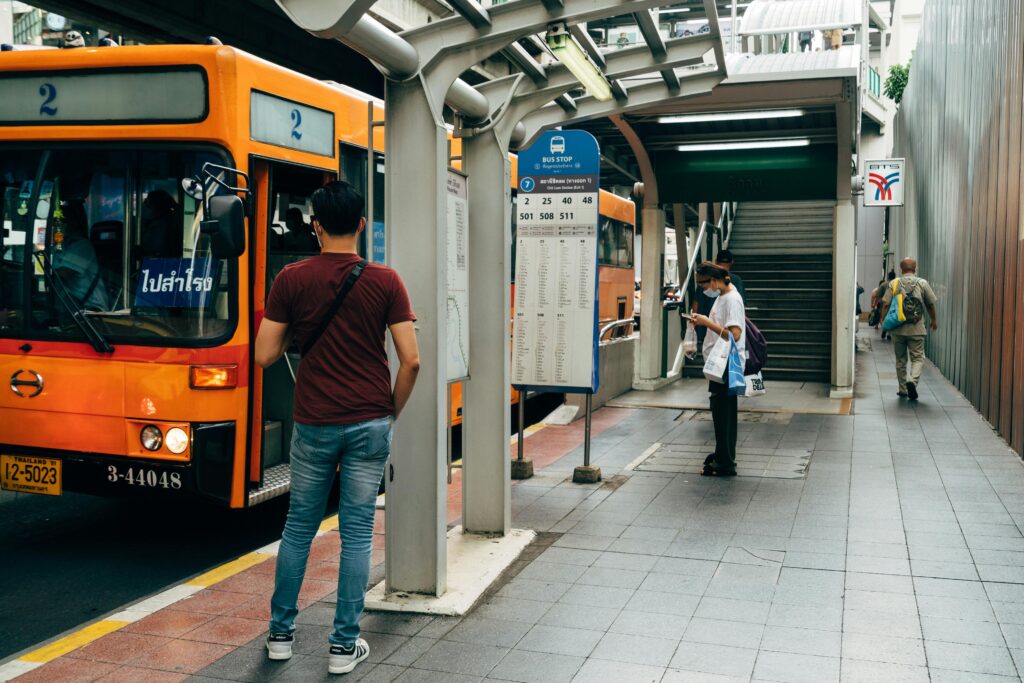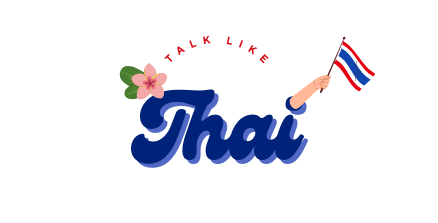Directions and Transportation

Directions and Transportation in Thai
Learning how to ask for directions and talk about transportation in Thai is an essential skill for travelers. Whether you’re navigating Bangkok’s busy streets or exploring rural areas, knowing a few key phrases will make your journey smoother and help you interact with locals more confidently.
How to Ask for Directions in Thai
When asking for directions, start with the phrase “Pai yang ngai?” (ไปยังไง?) which means “How do I get there?” or be more specific by saying “Pai [place] yang ngai?” (ไป [place] ยังไง?)—”How do I get to [place]?” For example, if you’re looking for a market, you could say “Pai talad yang ngai?” (ไปตลาดยังไง?).
Another useful phrase is “Nee yoo nai?” (นี่อยู่ไหน?), which translates to “Where is this?” You can also ask for landmarks with “Yoo glai gap [landmark] mai?” (อยู่ใกล้กับ [landmark] ไหม?)—”Is it near [landmark]?”
How to Talk About Transportation
Thailand offers many transportation options, from tuk-tuks to boats and everything in between. Here are some key phrases to help you get around:
- Taxis:
If you want a taxi, you can say “Ao taxi pai [place] krab/ka” (เอาแท็กซี่ไป [place] ครับ/ค่ะ), meaning “Take me to [place].” Be sure to confirm they use the meter by asking “Chai meter mai?” (ใช้มิเตอร์ไหม?). - Tuk-Tuks:
When negotiating with a tuk-tuk driver, say “Pai [place] tao rai?” (ไป [place] เท่าไหร่?), which means “How much to go to [place]?” - Buses:
To ask about bus routes, use “Rot mee pai [place] mai?” (รถเมล์ไป [place] ไหม?)—”Does the bus go to [place]?” - Trains:
If you’re at a train station, ask “Rot fai pai [place] oak tee nai?” (รถไฟไป [place] ออกที่ไหน?)—”Where does the train to [place] depart?”
Tips for Asking for Directions
- Be Polite:
Always end your sentence with “krab” (for men) or “ka” (for women) to show respect. - Use Landmarks:
Locals often use landmarks to give directions, so be familiar with nearby places like markets, temples, or major streets. - Learn “Left” and “Right”:
- “Liaw sai” (เลี้ยวซ้าย): Turn left.
- “Liaw khwa” (เลี้ยวขวา): Turn right.
- “ตรงไป” (dtrong pai): Go straight.
- Point to a Map:
If you’re unsure of how to say the name of a location, point to it on a map and ask “Nee pai yang ngai?” (นี่ไปยังไง?)—”How do I get here?”
Common Phrases You Should Know
- “Kho thod krab/ka” (ขอโทษครับ/ค่ะ): “Excuse me.”
- “Yoo glai gap nai?” (อยู่ใกล้กับไหน?): “Is it near here?”
- “Saai rot?” (สายรถ): “Which bus route?”
Conclusion
Navigating Thailand becomes much easier when you know how to ask for directions and discuss transportation. Simple phrases like “Pai yang ngai?” or “Liaw sai” not only help you get where you need to go but also show respect for the local culture. Ready to master this skill? Head over to our Directions and Transportation Lesson for more tips and examples!
